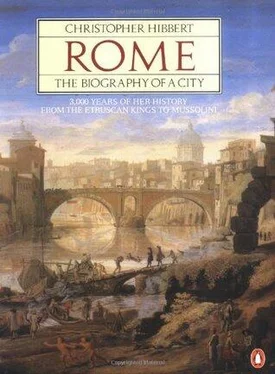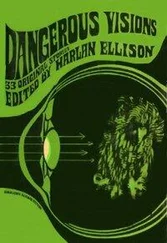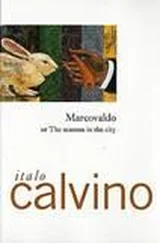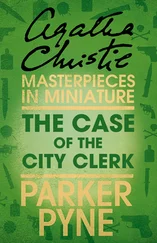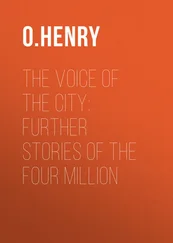Christopher Hibbert - Rome. The Biography of the City
Здесь есть возможность читать онлайн «Christopher Hibbert - Rome. The Biography of the City» весь текст электронной книги совершенно бесплатно (целиком полную версию без сокращений). В некоторых случаях можно слушать аудио, скачать через торрент в формате fb2 и присутствует краткое содержание. Жанр: Культурология, Искусство и Дизайн, на английском языке. Описание произведения, (предисловие) а так же отзывы посетителей доступны на портале библиотеки ЛибКат.
- Название:Rome. The Biography of the City
- Автор:
- Жанр:
- Год:неизвестен
- ISBN:нет данных
- Рейтинг книги:3 / 5. Голосов: 1
-
Избранное:Добавить в избранное
- Отзывы:
-
Ваша оценка:
- 60
- 1
- 2
- 3
- 4
- 5
Rome. The Biography of the City: краткое содержание, описание и аннотация
Предлагаем к чтению аннотацию, описание, краткое содержание или предисловие (зависит от того, что написал сам автор книги «Rome. The Biography of the City»). Если вы не нашли необходимую информацию о книге — напишите в комментариях, мы постараемся отыскать её.
Rome. The Biography of the City — читать онлайн бесплатно полную книгу (весь текст) целиком
Ниже представлен текст книги, разбитый по страницам. Система сохранения места последней прочитанной страницы, позволяет с удобством читать онлайн бесплатно книгу «Rome. The Biography of the City», без необходимости каждый раз заново искать на чём Вы остановились. Поставьте закладку, и сможете в любой момент перейти на страницу, на которой закончили чтение.
Интервал:
Закладка:
Basilicas, churches, covered cemeteries and mausolea were not the only fine buildings to be erected in Rome in the time of Constantine. In the Forum he completed, to modified designs, a secular basilica begun by Maxentius, the Basilica Nova, an immense structure, the last of ancient Rome's law courts and meeting-places, three of whose huge coffered vaults still remain. 11In one of its apses Constantine had placed an immense seated statue of himself, the body of wood, the robe of gilded bronze and the head of marble. This colossal head, six feet high and weighing nine tons, can still be seen in the courtyard of the Palazzo dei Conservatori on the Capitoline hill where the deeply cut pupils of the large and penetrating eyes stare out, above the huge hooked nose, like those of a commanding god.
Like most of his great predecessors, the Emperor Constantine built baths for the city. He may well have been responsible for the Arch of Janus Quadrifons, 12the huge structure in the Forum Boarium, the ancient cattle market by the banks of the Tiber. 13And he was, of course, the inspiration for the Arch of Constantine which was erected in 315 by the Senate and people of Rome to commemorate the Emperor's triumph over Maxentius at the Mulvian Bridge. 14
Splendid as Constantine found Rome, however, and magnificent as were the new buildings he gave to the city, he had to accept Diocletian's view that it could no longer serve as the Empire's capital, being too far removed from the northern and eastern frontiers. He had also to recognize that he had failed to make Rome fully Christian, that the deep-rooted pagan beliefs of most families were as strong as ever. So the Emperor removed his court to Byzantium on the Bosphorus strait and there founded the new Christian capital which was to become known as Constantinople.
Yet, although Rome was no longer the seat of imperial power, the city remained the caput mundi, ‘Invicta Roma Aeterna ’, as its coins declared. The centre and showplace of the civilized world, with a population of about 800,000, it was still the home of those incalculably rich families whose political influence was still paramount in the Senate, whose members still filled many of the most important posts in Italy and the Empire, whose businesses were still run from Rome, whose villas still stood beyond its walls and whose ancestors’ mausolea lined the roads leading out of it. Visitors to the city still stood in awestruck admiration as they looked across the Forum to the Colosseum, or gazed up at the temples, tiled with gilded bronze, on the Capitoline hill, or wondered at the number and size of the basilicas and triumphal arches, the statues, obelisks and fountains, the baths and libraries, the circuses and theatres.
Eight bridges crossed the river. 15Nineteen aqueducts carried water to the city on row upon row of arches stretching in seemingly endless lines across the countryside beyond the walls. 16The Roman poet, Rutilius Namatianus, expressed his pride in the indestructible glory of his city:
No man will ever be safe if he forgets you;
May I praise you still when the sun is dark.
To count up the glories of Rome is like counting
The stars in the sky.
There were still many powerful men in Rome who believed that this glory could only be preserved by a return to the old traditions and the old gods, by a rejection of the new Christianity with its foreign, plebeian origins, its internal feuds and its unfamiliar art. There were men like Quintus Aurelius Symmachus, the noble, upright, rich and cultivated leader of the Senate who, while numbering many Christians among his friends, constantly upheld the superior virtues of the pagan tradition and even supported the gladiatorial games, arranging for lavish entertainments to be given when his son was appointed Praetor and expressing disappointment when the German prisoners he had imported chose to strangle each other in their chains rather than fight before a Roman crowd. Symmachus was naturally appalled by an imperial order from Constantinople that the winged statue of Victory should be removed from the Senate House. ‘The Great Mystery cannot be approached by one avenue alone,’ he protested on behalf of his fellow-Senators. ‘Leave us the symbol on which our oaths of allegiance have been sworn for so many generations. Leave us the system that has given prosperity to the State.’ But his words were in vain; in 382 the statue was taken away. And a few years later in 392, shortly before Symmachus's death, an imperial decree, sterner and more effective than previous edicts, forbade all forms of pagan sacrifice and banished flowers and incense from the altars of the household gods. ‘They who were once the gods of the nation,’ wrote St Jerome, ‘dwell now with the owls and bats under their lonely roofs.’ In 408 a further decree provided that all temples should be put to other than religious uses. The gladiatorial games had already been abolished in 404 by imperial decree after a Christian monk, Telemachus, had been stoned to death by furious spectators in the arena of the Colosseum when he had tried to separate two fighting gladiators.
Up till the close of the fourth century, pagan shrines had been restored and kept in repair and use beside the places of Christian worship. A few years after Constantine's death in 337, new pagan statues had been erected along the Sacra Via; and since then the Temple of Vesta had been renovated. But now the struggle was over. Christianity had triumphed and Christian buildings were to dominate the city. No longer were they to be relegated to the outskirts of Rome and made as discreet as their size would allow. They were henceforth to appear as conspicuous and monumental witnesses to the faith, some of them being built in the very heart of the city and most, displaying increasingly classical emphasis, designed with high naves, approached through a porch or narthex, flanked by aisles and terminating in semicircular apses.
Powerful support for this new style of church building came from St Damasus, a rich and well-born prelate of strong Roman sympathies who was elected Pope in 366 and strove hard to identify the Christian Church more closely with Rome's long classical past. He and his immediate successors, many of them Roman and most of them upper class, treasured their classical heritage, revered the great Latin writers, admired the architecture which had developed in their times and saw the Kingdom of God as a sanctified successor to the Empire of the Caesars. The religious buildings which now appeared in Rome clearly reflected both this new philosophy and the growing confidence of the Church. Among these buildings, in which columns and other features from classical buildings were incorporated, were the grandly imposing S. Paolo fuori le Mura, begun in 384, to replace the modest basilica that Constantine had built over the grave of St Paul; 17the church of San Lorenzo in Damaso, now part of the fabric of the Palazzo della Cancelleria; 18and the church of S. Pudenziana which is dedicated to the daughter of the Senator who was believed to have been one of St Peter's first converts in Rome and in which the magnificent mosaic in the apse depicts Christ surrounded by the Apostles wearing the togas of Roman Senators. 19In about 400 building began north of the Colosseum upon the church of S. Pietro in Vincoli as a shrine for the chains which had bound St Peter. 20Soon afterwards work started to the south of the Colosseum on the basilica of SS. Giovanni e Paolo which was dedicated to the two Christian martyrs who were beheaded in 361 for refusing to sacrifice to pagan gods. 21
But while all this building was in progress within the city, beyond its walls the Roman Empire was crumbling into ruins. Invasion succeeded invasion, defeat followed defeat. In 378 the German people known as Visigoths overwhelmed an imperial army at Adrianople; and in 408 they invaded Italy and marched south upon Rome under their leader Alaric, a nobleman by birth who had once commanded the Gothic troops in the Roman army. When the Visigoths first appeared before the Aurelian Walls, which had recently been strengthened and raised to almost twice their original height, they were kept at bay with payments of money. But in 410 when they reappeared, the gates were opened by traitors within the city, and for the first time in eight hundred years a foreign force occupied Rome.
Читать дальшеИнтервал:
Закладка:
Похожие книги на «Rome. The Biography of the City»
Представляем Вашему вниманию похожие книги на «Rome. The Biography of the City» списком для выбора. Мы отобрали схожую по названию и смыслу литературу в надежде предоставить читателям больше вариантов отыскать новые, интересные, ещё непрочитанные произведения.
Обсуждение, отзывы о книге «Rome. The Biography of the City» и просто собственные мнения читателей. Оставьте ваши комментарии, напишите, что Вы думаете о произведении, его смысле или главных героях. Укажите что конкретно понравилось, а что нет, и почему Вы так считаете.
